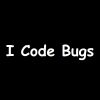题目:
使用栈实现队列的下列操作:
- push(x) – 将一个元素放入队列的尾部。
- pop() – 从队列首部移除元素。
- peek() – 返回队列首部的元素。
- empty() – 返回队列是否为空。
Implement the following operations of a queue using stacks.
- push(x) – Push element x to the back of queue.
- pop() – Removes the element from in front of queue.
- peek() – Get the front element.
- empty() – Return whether the queue is empty.
示例:
MyQueue queue = new MyQueue();
queue.push(1);
queue.push(2);
queue.peek(); // 返回 1
queue.pop(); // 返回 1
queue.empty(); // 返回 false
说明:
- 你只能使用标准的栈操作 – 也就是只有
push to top,peek/pop from top,size, 和is empty操作是合法的。 - 你所使用的语言也许不支持栈。你可以使用 list 或者 deque(双端队列)来模拟一个栈,只要是标准的栈操作即可。
- 假设所有操作都是有效的 (例如,一个空的队列不会调用 pop 或者 peek 操作)。
Notes:
- You must use only standard operations of a stack – which means only
push to top,peek/pop from top,size, andis emptyoperations are valid. - Depending on your language, stack may not be supported natively. You may simulate a stack by using a list or deque (double-ended queue), as long as you use only standard operations of a stack.
- You may assume that all operations are valid (for example, no pop or peek operations will be called on an empty queue).
解题思路:
队列先进后出,栈后进先出。用栈实现队列,可以用两个栈完成题解。入队列时用 stack1 存入节点,出队列时 stack1 内节点顺序出栈压入 stack2 中。
例如 1, 2, 3 元素顺序入队列
即存入栈stack1:[1, 2, 3]
出队列时顺序应为:1->2->3
但是栈先进先出,出栈顺序为:3->2->1
与出队列顺序不相符
借助另一个栈stack2
stack1内的元素顺序出栈并压入stack2
stack1:[1, 2, 3] ---> stack2:[3, 2, 1]
此时stack2出栈顺序:1->2->3
与出队列顺序相符
**注意:**在出队列时无需着急将 stack1 中的节点顺序压入 stack2。因为要实现的队列是先进后出,可以将 stack2 中的节点全部弹出之后 再将 stack1 内节点顺序压入stack2,这样可以将出栈的时间复杂度摊还到 O(1)。
Java:
class MyQueue {
private Stack<Integer> stack1;
private Stack<Integer> stack2;
public MyQueue() {
stack1 = new Stack<>();
stack2 = new Stack<>();
}
public void push(int x) {
stack1.push(x);
}
public int pop() {
if (stack2.isEmpty()) {
while (!stack1.isEmpty()) {
stack2.push(stack1.pop());
}
}
return stack2.pop();
}
public int peek() {
//stack1节点顺序弹出并压入stack2
if (stack2.isEmpty()) {//条件是: stack2为空,而不是stack1非空, 这样摊还复杂度O(1)
while (!stack1.isEmpty()) {
stack2.push(stack1.pop());//stack1弹出节点并压入stack2
}
}
return stack2.peek();
}
public boolean empty() {
return stack1.isEmpty() && stack2.isEmpty();
}
}
Python:
Python语言没有栈和队列数据结构,只能用数组 List 或双端队列 deque 实现。
这类编程语言就压根不需要 用队列实现栈或用栈实现队列这种问题,因为栈和队列本身就必须借助List、deque实现。
所以这道题在这种语言中这就非常简单了,可以说是作弊。
class MyQueue:
def __init__(self):
self.queue = []
def push(self, x: int) -> None:
self.queue.append(x)
def pop(self) -> int:
#弹出第一个元素
return self.queue.pop(0)
def peek(self) -> int:
#返回第一个元素
return self.queue[0]
def empty(self) -> bool:
return not self.queue
点击查看更多内容
为 TA 点赞
评论
共同学习,写下你的评论
评论加载中...
作者其他优质文章
正在加载中
感谢您的支持,我会继续努力的~
扫码打赏,你说多少就多少
赞赏金额会直接到老师账户
支付方式
打开微信扫一扫,即可进行扫码打赏哦




